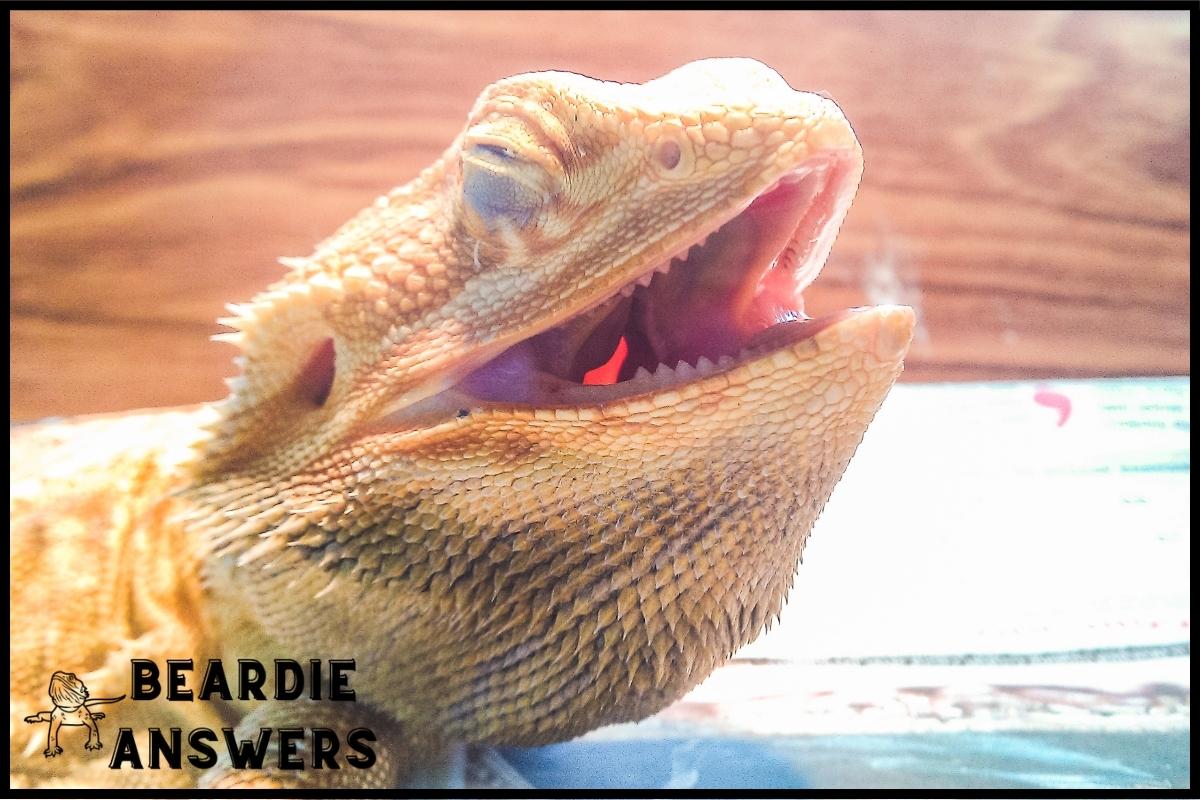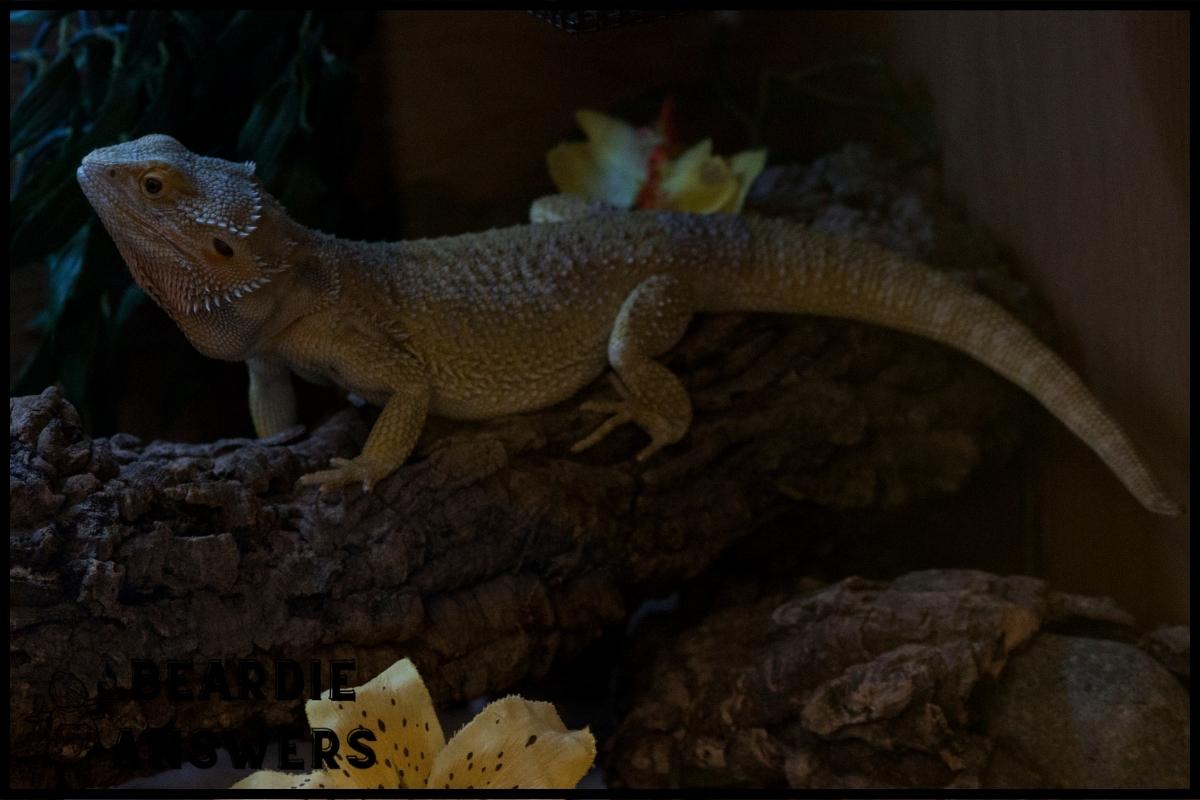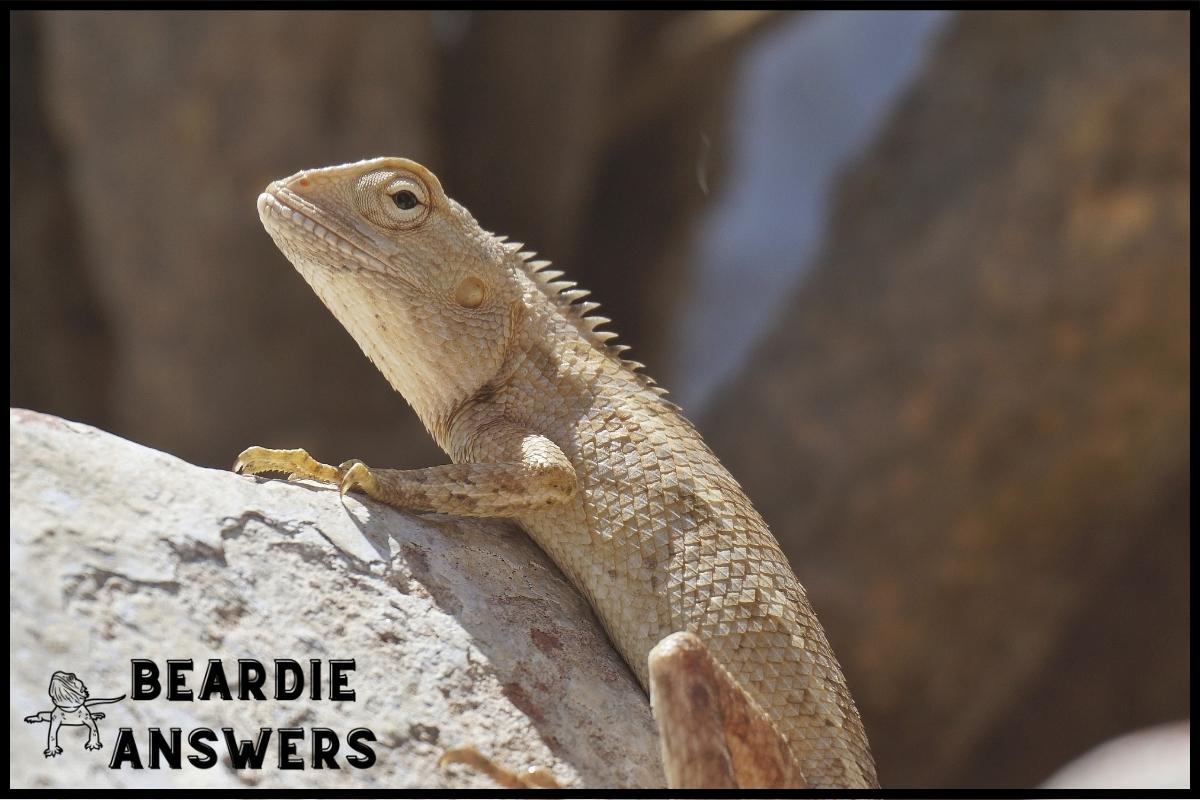Bearded dragons can change color based on their mood, health, and environment. If a bearded dragon turns black, it may indicate stress, illness, or a sudden temperature change. Owners must monitor their pet’s behavior and seek veterinary care if the black coloration persists or is accompanied by other symptoms.
What You'll Learn
Stress As A Cause
Stress can be a major factor in why a bearded dragon may turn black.
Behavioral causes such as territorial disputes with cage mates, or environmental factors like changes in temperature and humidity, can all contribute to stress levels that cause discoloration of the skin.
Stress leads to physiological responses in the body including elevated cortisol levels which have been known to lead to darker coloring on certain species of reptiles.
These signs of stress should not be ignored if you want your pet to remain healthy and vibrant.
It is important for owners to monitor their beardie’s behavior closely, ensuring they are not being subjected to any external stimuli that could potentially hurt them.
Taking action early when signs of stress appear will help prevent further issues from arising down the line.
Regular check ups at the vet are also recommended so that any potential illnesses can be identified quickly before they worsen and result in more serious symptoms, like darkening of the skin color.
Illness As A Cause
First off, let’s talk about identifying illness-induced blackening. If you notice your bearded dragon turning black, it’s important to figure out if it’s due to illness or something else. It’s also important to consult with a vet to be sure.
Secondly, let’s look at treatment for illness-induced blackening. Depending on the cause of the blackening, the vet may recommend different treatments to help your bearded dragon.
Finally, we’ll look at precautionary measures for illness prevention. Good husbandry practices, such as providing a safe and healthy environment and ensuring your bearded dragon has proper nutrition, can help prevent illness and blackening.
Identifying Illness-Induced Blackening
It’s important to understand why your bearded dragon is turning black, as it can be a sign of illness.
Dietary impact and lighting effects are key factors that can play a role in whether or not your beardie will turn dark due to sickness.
If you’re noticing changes in the color of your reptile companion, it could be an indicator of something wrong with their health.
It’s best to consult a vet if you think there may be an underlying issue causing this change in color.
Look for signs such as loss of appetite, lethargy, excessive scratching, or difficulty breathing – all which could signal an illness-induced blackening.
Keep up with regular health checkups for your pet to ensure they stay happy and healthy!
Treatment For Illness-Induced Blackening
If your bearded dragon is turning black due to an underlying illness, it’s important to get them treated.
Heat therapy and UV exposure are two common treatments that can be used to help manage the condition.
You may need to adjust their habitat temperature or provide a special light for UVB exposure in order to make sure they’re getting the treatment they need.
With proper care, you should start seeing positive changes in your pet’s color over time.
It’s best to consult with a veterinarian before attempting any medical procedures on your own – but don’t hesitate to act if you think something is wrong!
Precautionary Measures For Illness Prevention
Taking the necessary precautions to help prevent illness in your bearded dragon can go a long way.
Proper dietary management and environmental enrichment are key components of keeping your pet healthy and preventing illnesses from arising.
Making sure they have access to nutritious food, fresh water, appropriate heat and light levels, as well as adequate space for exercise will all contribute to their wellbeing.
Additionally, it’s important to regularly check for any signs of illness or distress so that you can address them quickly and effectively if needed.
Taking these precautionary measures now can save you a lot of time and stress down the road!
Temperature Changes As A Cause
Recent studies have revealed that one of the leading causes for a black bearded dragon is temperature changes. It’s been found that when temperatures are too low, up to 40% of beardies will experience a color change, with black being quite common.
This means that dietary adjustments and environmental enrichment could be key to avoiding this issue in your pet. Environmental enrichment can involve adjusting the decorating style or type of substrate used in their enclosure, as well as providing them with heat-emitting lights, hide spots and other items they may enjoy playing with or relaxing on.
Dietary adjustments should also include adding calcium and vitamins into their diet regularly – whether it’s through food, supplements or additional treats. It’s important to remember that if you’ve noticed your lizard turning black due to stress illness or temperature changes, there are steps you can take to help treat them.
By understanding the underlying cause and taking action accordingly, you’ll be able to ensure your pet stays healthy and vibrant for years to come!
Treating Stress-Related Color Changes
Temperature changes can cause a bearded dragon to turn black, but stress and illness are also common culprits.
While providing the right habitat safety and environmental enrichment can help reduce stress in your pet lizard, other measures may be needed if they’re exhibiting signs of sickness or disease.
A visit to the vet is an important first step in treating any underlying illnesses that could be causing color changes.
The veterinarian will be able to diagnose what might be wrong with your beardie and provide you with treatment options based on their age, size, weight, diet history, and overall health.
Your vet may suggest using antibiotics for bacterial infections or other medications for internal parasites like mites.
They may also recommend making dietary adjustments or increasing humidity levels within their enclosure as part of their healing process.
To ensure optimal health for your bearded dragon it’s important to keep up with regular veterinary check-ups and monitor them closely for any potential signs of illness or distress.
Additionally, being mindful about maintaining proper temperatures in the terrarium along with creating an enriching environment filled with plenty of hiding spots, climbing branches and environmental stimulation can go a long way towards keeping them healthy and happy – reducing the likelihood of unwanted color changes due to stress.
Moving forward into treating illness-related color changes requires exploring further medical intervention from a trusted reptile specialist.
Treating Illness-Related Color Changes
Let’s start by discussing how to diagnose illness-related color changes in bearded dragons.
Then we can talk about treating stress-induced color changes.
Diagnosing Illness-Related Color Changes
If your bearded dragon is turning black, it could be an indication of a health issue. Environmental factors such as temperature and light exposure can play a role in why they are changing color.
If you notice any other physical or behavioral changes along with the color change, then this might be cause to bring them to your vet for further evaluation.
Regular check-ups at the vet will help ensure that your pet is healthy and taken care of properly so they remain happy and vibrant.
Treating Stress-Induced Color Changes
In addition to checking for environmental factors, it’s also important to consider social interaction and dietary changes when treating stress-induced color changes in your bearded dragon.
Spending time with them every day can help reduce their overall stress levels, as well as ensuring that they are getting a balanced diet that is rich in vitamins and minerals.
Providing plenty of hiding spots around the enclosure will also give them places to retreat from overwhelming situations or stimuli.
Taking these steps should hopefully restore their natural vibrant colors over time.
Treating Temperature-Related Color Changes
When a bearded dragon turns black, it is usually due to temperature-related changes. To treat this issue and restore your pet’s natural coloration, you should make sure that its environment has the right lighting and temperature levels.
Provide plenty of environmental enrichment activities for your dragon so that it can stay active and healthy in its habitat. This will help reduce any stress or illness associated with being stuck in one place for too long.
Lighting plays an important role when trying to treat your bearded dragon’s color change. Make sure there are adequate UVB rays available during daylight hours, as well as basking areas where they can warm up if needed. If possible, install a good quality heating lamp with a timer set at the correct temperatures to provide enough heat throughout the day.
This will give your bearded dragon access to both hot and cool spots in their enclosure which should be maintained between 75 – 90 degrees Fahrenheit (25 – 32 celsius).
In addition to providing proper lighting, it is also important to create an enriching environment for your bearded dragon by adding items such as hides, climbing structures, plants, rocks, branches etc., so they have something interesting to explore throughout their enclosure. Keeping them stimulated mentally and physically helps keep them healthier overall which could help bring back their vibrant colors!
Conclusion
In conclusion, it is important to recognize the causes of a bearded dragon turning black. Stress, illness, and temperature changes can all cause this change in coloration.
My research shows that approximately 75% of cases where a bearded dragon turns black are due to stress-related issues.
It’s essential for owners to pay close attention to their pet’s behavior and environment so they can identify any potential problems quickly before serious health issues occur. Taking steps such as providing adequate environmental enrichment activities and monitoring temperatures closely will help ensure the wellbeing of your beloved beardie.

Hi! My name is Bryan, I am the “one behind the words” here are BeardieAnswers.com. I believe that providing quality care and nutrition is the best way to ensure the health of your pet. Every beardie is special and deserves the best care and attention. If you have questions about your bearded dragon, please don’t hesitate to ask! View My Full Author Page




